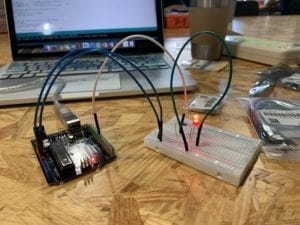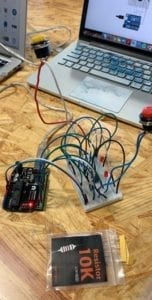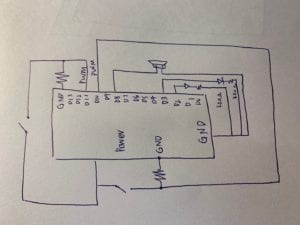Circuit 1: Fade

This circuit was fairly simple to build, and the LED immediately turned on.
Circuit 2: ToneMelody
This circuit had a considerably smaller number of wires to attach to the breadboard, making it fairly easy to construct.
Circuit 3: Speed Game

This circuit took some time to construct, as there were 2 push buttons that required power from the circuit in order to function.

Question 1:
Technology is embedded in our everyday lives, from the moment we wake up to the moment we fall asleep. We immediately pick up our phones, check our emails or social media, all through the use of technological inventions. The Fade circuit can be applied to when your iPhone turns on and off, how it is a gradual fading light as opposed to completely on to completely off. The toneMelody circuit can be applied to a washing machine. When the washing cycle is finished, a melody will play to let you know that your clothes are done washing (on some machines). The Speed Game circuit can be applied to the Japanese push button arcade games, where two people compete to press the joystick as quickly as they can. I define interaction as when two participants work and influence each other, or how one participant responds to another participant’s input. One example of an interactive project is the teamLab’s Infinity of Flowers, where viewers can touch the artwork and see the flowers dance. When one participant is doing an action, the artwork is responding to the participant’s input.
Question 2:
We used the 10K resistor with the push button to ensure the power supply will not be overloaded with power. We want to make sure the circuit will not be overcharged from the current.
Question 3:
If I had 100,000 LEDs, I think I would try to decorate my entire house entirely in LEDs, like a Christmas display.